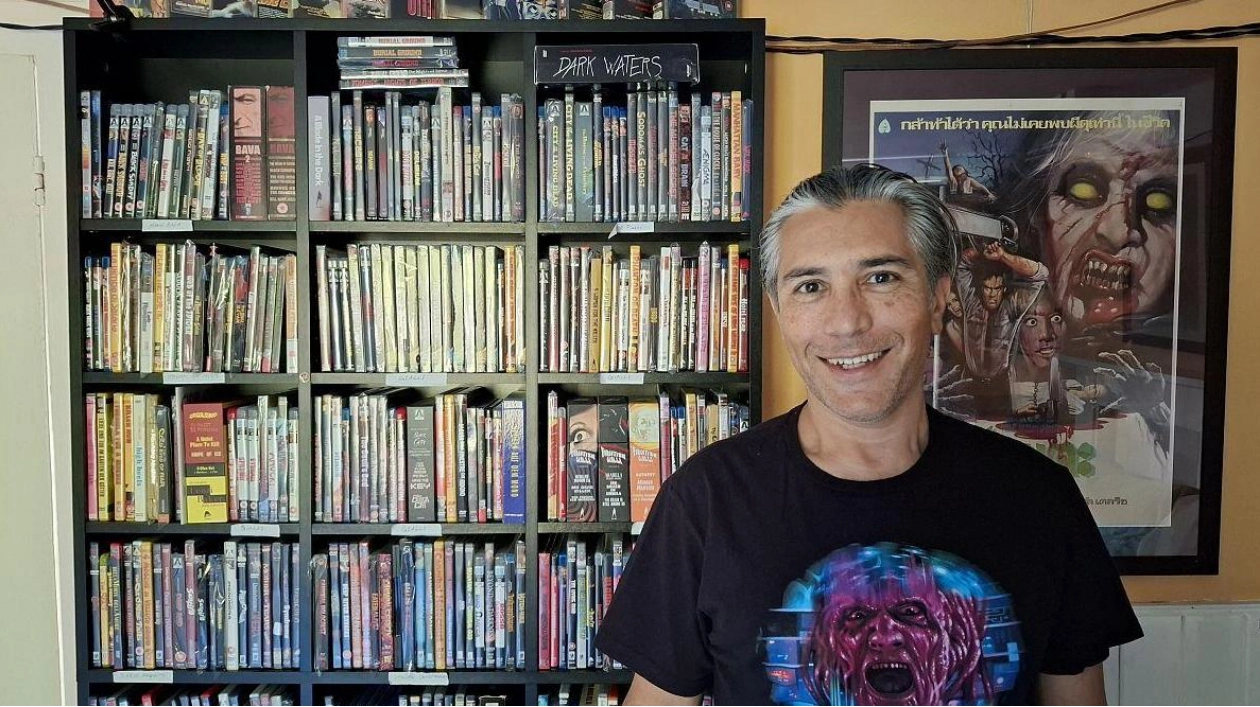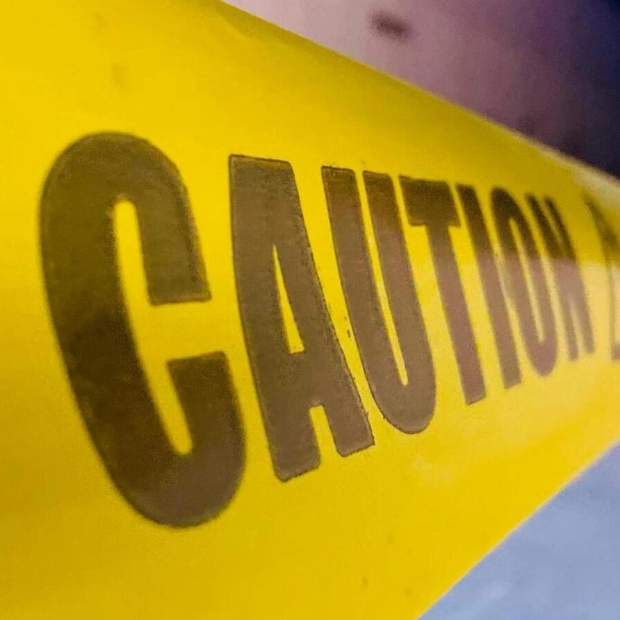Dean boasts an impressive collection of over 12,000 DVDs, Blu-Rays, Laserdiscs, and VHS tapes. At the peak of his collection, the 59-year-old office administrator had to rent a small storage unit to house over 100 crates of DVDs. “I maintain a spreadsheet where I log new titles as I acquire them. It helps me locate them—a bit meticulous, but essential,” he shares with Euronews Culture. Now, most of his collection is crammed into his attic, alongside a large screen TV and a sofa. “I had envisioned installing a projector, but the roof’s shape made it impossible,” he laments.
For Dean, this passion began in the late 1970s with Super 8 films, intensified with the advent of affordable VHS, and eventually transitioned into the more modern and compact formats of DVDs and Blu-Ray discs. “It’s a personal film library that I can access whenever I want to watch a specific film, which might not be available on a streaming service,” he explains. “You can share it with friends and family, curate your own film nights. The extra features and commentaries on discs are often superior to those on streaming services, especially for film enthusiasts.”
While some might be astonished by the size of Dean’s collection, an increasing number of people are choosing physical media over subscribing to numerous streaming services like Netflix, Prime Video, Disney+, and more. In July, British retailer HMV reported a 5% increase in DVD and Blu-Ray sales in the first half of 2024, with managing director Phil Halliday attributing this to people’s willingness to pay for physical copies of shows or films they plan to rewatch. “When streaming first emerged, many viewed it as cost-effective with a vast selection, but that perception has changed,” Halliday told the BBC.
Indeed, people have grown frustrated with films disappearing from streaming platforms or TV shows being abruptly cancelled, such as Netflix’s sci-fi mystery '1899' and Max (formerly HBO Max) ending 'Westworld' after four seasons in 2022. Coupled with rising subscription costs and the overwhelming amount of content, cinephiles especially value the security and high-quality features that only physical media can offer.
Nostalgia also plays a significant role in the appeal of physical media. In a digital age that often feels superficial, physical formats evoke a sense of authenticity—the grainy texture of an old VHS or the repetitive theme of a DVD menu transporting us back to a simpler time. Despite industry reports showing a 4.7% decline in UK DVD and Blu-ray sales as of 2024, there remains a strong drive among dedicated film fans to keep these older mediums alive.
Dean’s love for film traces back to his grandmother, who adored cinema in the 1930s. “If I behaved, we would stay up late to watch horror films on TV,” he recalls. At 20, he bought a VHS recorder and began taping films from TV, marking his favorites in the Radio and TV Times. This marked the beginning of his VHS collection, which was expensive in the 1980s. He also frequented film shops in London, purchasing posters and stills of his favorite movies. By 1988, he had joined ‘The Gothique Film Society’ in Holborn, London, a group of like-minded individuals who gathered monthly to watch old films. Over time, he expanded his collection to include a variety of film and TV memorabilia, now sharing a home with his partner, also an avid collector, who has over 3,000 DVDs.
Nostalgia and aesthetic pleasure are reasons Dean has kept his VHS tapes. “The sometimes crude, cut-and-pasted covers are an art form with a punky underground feel,” he says. He still collects VHS, particularly Hammer films, his main passion. Recently, he acquired three 1985 big black-boxed US releases of The Curse of Frankenstein, Horror of Dracula, and The Mummy. “I can’t play them, but that’s not the point. Owning something that links to the past is fascinating,” he explains.
Dean spends much of his time writing horror stories and magazine articles, often pausing to admire his shelves of physical media. “It’s inspiring to see those lurid greens and reds, with half glimpses of skulls and gibbets on the spines—more fonts than those of every church in the world combined,” he says. “In the horrors of hell, this is my heaven—and be damned to online streaming!”
Dean’s collection allows him to watch films whenever he wants, learn more about their production through extras, and enjoy the tangible pleasure of holding a work of art. His passion for film has led him to make his own films and run a private film club showing obscure world horror films in aid of Macmillan Cancer Support for nearly a decade.
With labels like 88 Films (UK), Indicator (UK), Treasured Films (UK), Severin (USA), Vinegar Syndrome (USA), Cauldron (USA), and his favorite, Mondo Macabro (USA), the depth and quality of releases continue to grow. Despite the global shift towards streaming, Dean is confident that the collecting of films as physical media will persist for many years.
Dean’s 19-month-old daughter is already showing signs of following in his footsteps, demanding films be screened on a projector rather than a laptop. He started collecting 8mm cut-downs of horror movies as a teenager, drawn to their garish covers. When home video arrived, he bought a VHS player and eagerly sought out Video Nasties, many of which were only available under the counter. The DPP’s list of banned films became a valued shopping list for horror fans in the 80s.
As technology advanced, Dean moved on to laserdiscs, paying £80 for a pristine print of Suspiria. But with the advent of DVD, his laserdisc player was relegated to the attic. Today, even DVD is considered outdated, with 4K Blu-rays taking center stage. Dean is glad he kept most of his DVD collection, as there have been many occasions where his favorite films were unavailable on any streaming service. “That’s when all collectors of physical media can rightly feel smug,” he says. “Plus, discs often come packed with juicy extras that you don’t get when streaming a movie.”






